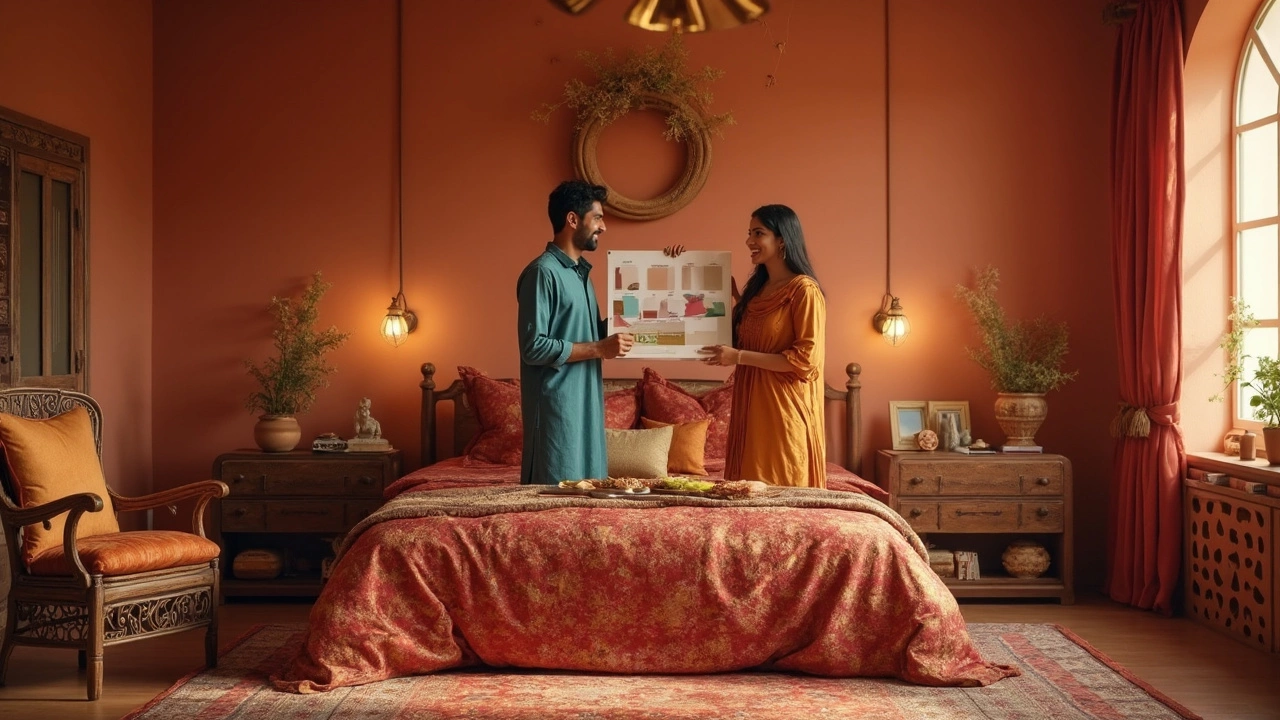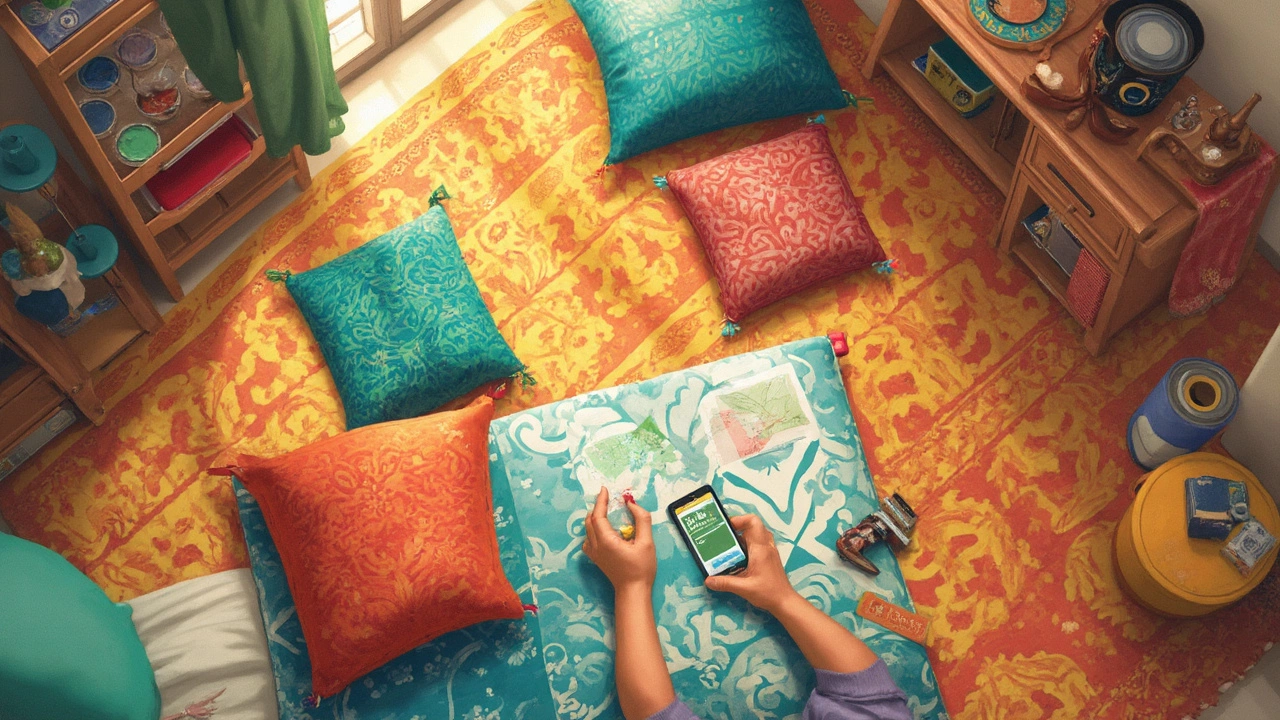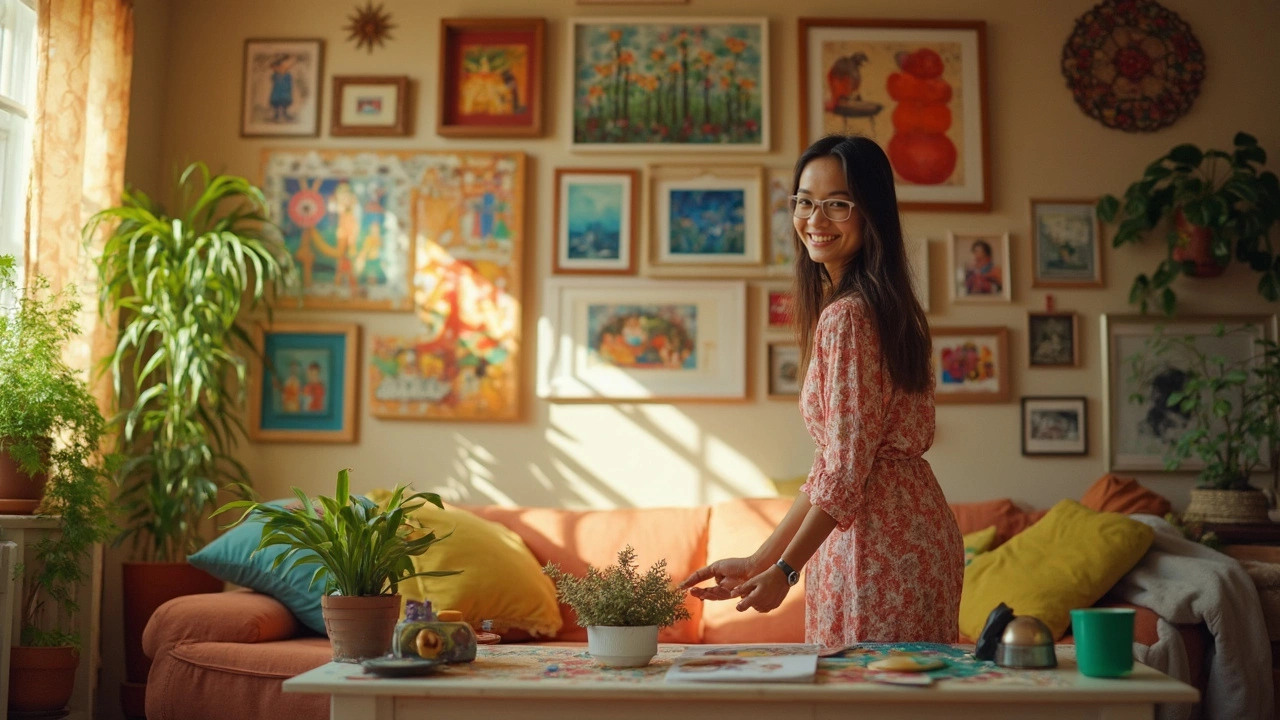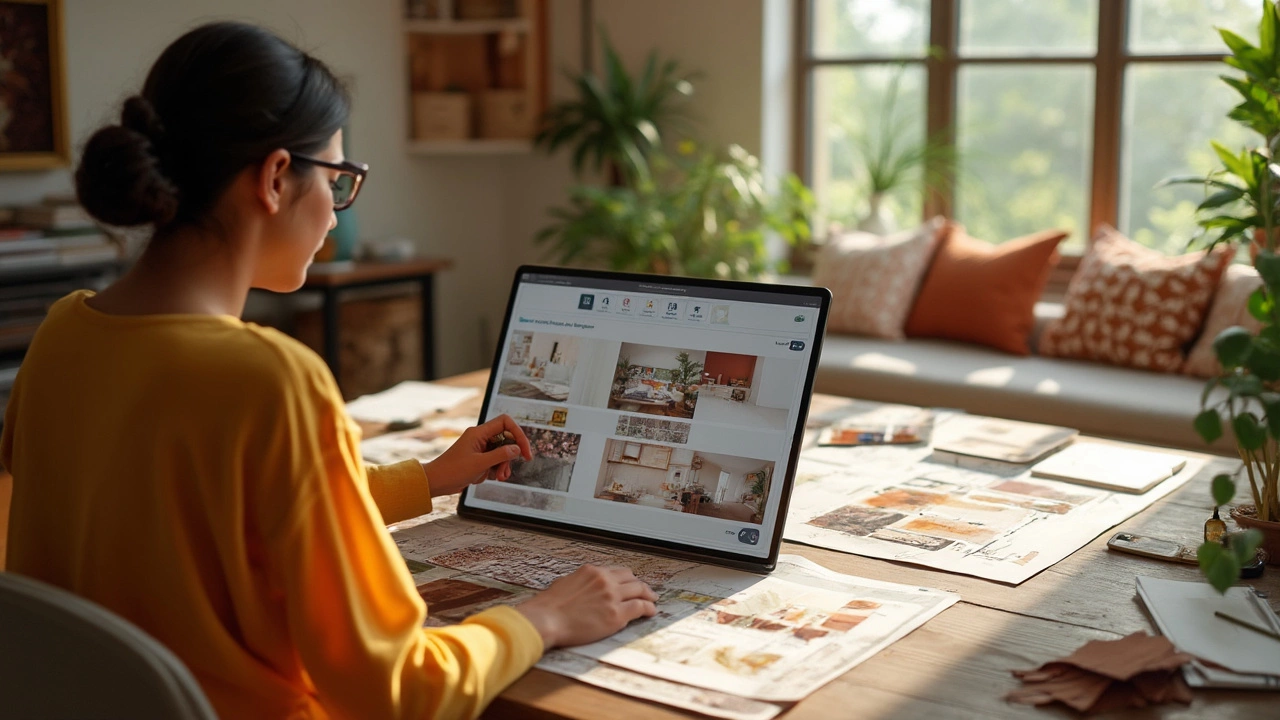Bedroom Decor: Where Do I Start?

Staring at a blank bedroom feels kinda intimidating, right? You want it to look good, but also like you—plus, you probably don’t want to blow your whole paycheck getting there. Good news: you don’t have to figure it all out right now. The trick is to start with the stuff that actually makes a difference.
First, stop scrolling Instagram and look around your room. Notice what you like (or really hate) about it. Cluttered corners? Boring colors? It’s way easier to make smart choices when you know what’s bugging you. A real pro move is to snap a photo. Weirdly, seeing your bedroom in a photo points out what stands out or feels off way faster than just staring at it.
- Find Your Style Vibe
- Get Real with Budget and Space
- Pick a Color Scheme That Works
- Mix Comfort and Cool Details
Find Your Style Vibe
Before you start tossing pillows and buying random wall art, take a second to figure out what style actually clicks with you. Your bedroom should feel like your space, not a copy-paste from a furniture catalog. Start by paying attention to the stuff you already own and anything you keep saving on Pinterest. Patterns? Super simple lines? Tons of plants? There’s usually a theme hiding in your choices.
There are a few main styles people always come back to—think modern, boho, minimalist, industrial, or farmhouse. Each one looks and feels different. For example, modern has clean lines, neutral tones, and very little clutter. Boho is full of bright colors, patterns, and a mix of textures. Minimalist bedrooms are crazy simple: barely any stuff, lots of space, and calming whites or grays. Industrial goes for a raw look with metal and wood, while farmhouse brings in cozy touches and soft colors.
- If you’re not sure what you love, make a quick mood board. Open up a free app like Canva or just screenshot pics and toss them in a folder on your phone.
- Compare what you saved. Are you gravitating toward earthy tones? Slick metal? Soft fabrics?
- Pick three words that describe what you want your room to feel like, for example: chill, bright, and cozy. Let those words guide every choice you make.
The best rooms mix your vibe with some practicality. If you have to squeeze in a desk, or you work from home, you’ll want style that makes the space comfy and functional too. Remember, there’s no wrong answer here—just keep it true to you and your daily life. Zero pressure to nail it perfectly on the first try, either.
Focusing on your bedroom decorating style early keeps you from blowing cash on stuff you’ll regret. You’ll know what fits the vibe and what doesn’t. Trust your gut—if something makes you smile every time you walk in the room, you’re on the right track.
Get Real with Budget and Space
Before you start grabbing everything you see at Target or scrolling through endless shopping carts, stop and look at what you’re working with—both your cash and your square footage. A ton of people get stuck halfway into a bedroom revamp because they never set limits. You don’t want to run out of money, or realize your bed frame sticks out into the closet door.
The average bedroom in the U.S. is about 11x12 feet. That doesn’t leave a ton of space for fancy chairs or huge furniture, especially if it’s a room you share. Break out a tape measure and get real about what fits. Make a quick sketch or use a free app like Roomstyler—seriously, drawing it out can save you headaches later.
Now, let’s talk money. A 2024 Statista report showed the average American spends about $2,000 on bedroom decorating every few years. But here’s the thing: there’s no need to match that number if you don’t want to. Set a real budget, something you’re comfortable with—whether it’s $200 or $2,000. Prioritize big stuff first: bed, mattress, blackout curtains, maybe a rug. If you’re on a tight budget, add style with new pillow covers or lamps instead of expensive dressers.
- List out what you already own and what actually needs replacing (be honest—nobody needs three nightstands).
- Decide what matters most: decent sleep? more storage? a spot for your dog’s bed?
- Shop slow. Spacing out purchases means you only get what you really want, not random trend stuff that just adds clutter.
| Item | Average Spend Range | Replacement Cycle |
|---|---|---|
| Bed Frame | $150-$700 | Every 10 years |
| Mattress | $300-$1,200 | Every 7-10 years |
| Pillows | $20-$100 | Every 2 years |
| Lamps/Lighting | $30-$200 | As needed |
| Decor (art, rugs, small stuff) | $50-$300 | Anytime |
Keep these numbers in mind and remember: it’s your room, your budget, your rules. Getting smart about space and money means less stress—and way more room for stuff you actually enjoy.

Pick a Color Scheme That Works
The colors you choose for your bedroom set the tone for the whole space. Don’t just pick random colors you saw on a social post—think about what kind of vibe you actually want. For bedrooms, calm shades usually win out. According to a 2023 survey by the National Sleep Foundation, people with blue, green, or neutral-colored bedrooms slept better and felt more relaxed in their spaces. That’s no accident. Blues and greens tend to lower stress, while bright reds or oranges can actually pump up your energy, which isn’t always great when you’re trying to crash at night.
So how do you choose a color scheme that fits? Use the 60-30-10 rule. That’s:
- 60% of the room in a main color (like walls, bedding, or a rug)
- 30% in a secondary color (curtains, accent furniture, maybe a big art piece)
- 10% as a pop color (pillows, small decor, maybe a lamp—you get the idea)
If you aren’t sure where to start, grab a paint sample card from the hardware store. They often show different shades that go well together. Or use sites like Coolors or Pinterest to build out your own palette. Here’s a tip: stick with two or three colors, max, if you want your room to look put together (and not like a crayon box exploded).
Some quick combos that always work:
- Light grey, navy, and mustard
- Soft beige, olive green, and black
- Pale blue, white, and walnut wood tones
Check this out: bedrooms with lighter wall colors look about 10% bigger, on average. Here’s a quick table showing color effects based on survey data:
| Color Type | Common Effect | Percent Who Slept Well |
|---|---|---|
| Blue | Calming, restful | 68% |
| Green | Peaceful, fresh | 64% |
| Grey | Modern, cool | 59% |
| Red | Energizing, bold | 35% |
Remember, you’re not stuck with just paint. Bedding, curtains, or rugs are low-commitment upgrades if you want to play with color without stressing out over a brush. If you keep your main color soft, you can swap in bolder accents seasonally. When it comes to bedroom decorating, color is one of the easiest ways to get instant impact—without needing to buy every trendy accessory out there.
Mix Comfort and Cool Details
If there’s one thing you actually want in your bedroom, it’s to feel good in it. Let’s be real: looks matter, but so does being able to flop down on your bed after a long day. Getting both comfort and style is totally doable — and it doesn’t have to cost a fortune.
Start with basics: your mattress and pillows. National Sleep Foundation research says the right pillow can ease neck pain and help you sleep better. Not a fan of chunky memory foam? There are tons of cooling options and hybrids out there now, and even a new pillowcase can change up the vibe. You shouldn’t wake up achy just for the sake of having a cute bed setup.
Next, put your money on soft bedding. Studies have found that good-quality cotton sheets — even just 300 thread count — can actually help regulate temperature, making sleep more restful. Don’t forget a lightweight comforter or throw blanket. Layering isn’t just for style; it’s how you keep cozy or cool without turning your bed into a sauna.
- Add a bedside lamp with soft lighting. You’ll never want to go back to harsh overhead lights after this.
- Choose blackout curtains if you want pitch-black sleep or sheer ones if sunrise helps you wake up—depends on your vibe.
- Plug in something that smells nice, like a small diffuser. Studies show lavender can actually help people chill out and fall asleep faster.
This is also where you can show off a little. Personal touches like framed photos, quirky art, or a fun thrifted chair make your room feel more like bedroom decorating is about you, not some random catalog. The trick is to keep it balanced: too many details and it starts looking messy; too few and it’s blank and boring.
| Item | Comfort Benefit | Style Perk |
|---|---|---|
| Mattress Topper | Cushion support, reduces back pain | Fresh look with new fitted sheet |
| Throw Pillow | Extra lounging support | Adds color, pattern, or texture |
| Blackout Curtains | Blocks light for deep sleep | Frame windows, finish the room |
| Area Rug | Warm underfoot, buffers sound | Pulls together the whole color scheme |
Every time you finish a layer, step back and check if you still like walking into this room. If it feels too stuffy or crowded, swap something out. That’s the best part: your bedroom can keep evolving as you do.


